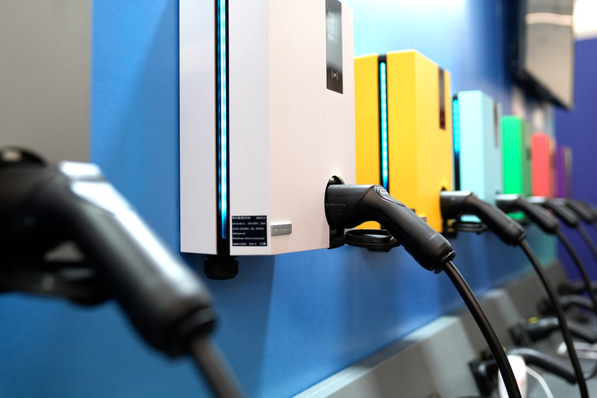Mr Geisler, why is facade-integrated glass an interesting market?
Holger Geisler: We are currently seeing very clearly the risks involved in being dependent on foreign countries for energy. Energy-autonomous buildings are a suitable answer here. In addition, CO2-neutral buildings make an important contribution to environmental protection and can therefore also score points in building certification. This can be elegantly implemented with integrated solar modules in the facade and in house roofs.

Ceramic Colors Wolbring GmbH
Why are there so few buildings with PV facades to date?
Geisler: Up to now, PV modules have always been black in appearance, including those modules for facade integration. But do we want to inhabit "black cities" for the sake of sustainability?
See also: Sunovation uses new coating technology for coloured BIPV modules
Experience shows that building-integrated PV modules are only accepted by planners and building owners if they are visually appealing. One key to this is our new ColorQuant glass colours, which allow PV elements to be coloured. ColorQuant solar technology was jointly developed by Merck in Darmstadt and Ceramic Colors Wolbring GmbH.
How efficient are the coloured PV facade elements?
Geisler: With our PV colours, there is hardly any need to compromise on efficiency. Since our PV colours are translucent, the solar output remains high.
How are the PV colours structured?

Ceramic Colors Wolbring GmbH
Geisler: Water-soluble ceramic pastes are used for the PV colours. The structure of the ColorQuant PV colours is based on colouring by interference. In this process, the incident sunlight is split up like in a prism. The ColorQuant colour layer lets through the light that the solar cell needs to generate energy. Only those wavelengths are selectively reflected that are necessary for colouring. The result is only a minimal loss of power from the solar module. At the same time, we achieve a rich colour.
How "clean" are the colours in terms of environmental protection?
Geisler: Since we use water-soluble, environmentally friendly ceramic pastes in the production of colours, no hazard labelling is required according to EU directives. For glass finishers who use ColorQuant colours, this means that there are no high additional or recycling costs for disposal, as colour residues etc. can be disposed of without any special effort.
Please tell us something about the application of PV colours.

Ceramic Colors Wolbring GmbH
Geisler: Glass finishers can use three methods to apply colours to PV glass: Screen printing, roller coating and spray application. Our specialists recommend coating on position 2 of the glass/PV unit.
What formats and colours are available?
Geisler: In principle, all formats and sizes up to the jumbo format of 3210 × 6000 mm can be implemented. We offer the ColorQuant PV colours similar to RAL, NCS and Pantone.
What happens if a coloured PV module breaks?
Geisler: No problem. if a coloured PV glass ever breaks, because it can be reproduced very easily. Wolbring archives every colour substrate in a catalogued warehouse, so the desired colour can be reordered exactly at any time.
This interview first appeared in English on GW-News and was conducted by Matthias Rehberger of Glasswelt.
Also interesting: A solar brick to transform buildings into energy generators







